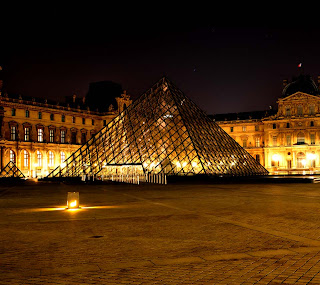A compendium of interesting places, hidden wonders, Beautiful Places, strange travel destination, tourist attractions.
Saturday, 27 October 2012
Saturday, 20 October 2012
Lahore Fort, Pakistan
The Lahore fort has an appealing 'abandoned' atmosphere and a wonderful place to simply wander around to start attraction of the old city. Lahore is the 2nd largest city of the country, contains many historical places. It is also called Royal Fort, Shahi Qila and Badshahi Qila covers a massive area of 20 hectares. Lahore Fort and Shalamar Garden are enlisted as World Heritage Sites in 1981 by UNESCO (United Nations Educational, Scientific and Cultural Organization).
The Lahore Fort history is shrouded in mystery and no one known about its traditions. However, Lahore fort was built by son of Ramayana of Legendry age, attributed to mythic “LOH”, a small shrine still exist in Lahore fort nearby to Alamgiri gate.
Therefore, built, damaged, demolished, rebuilt and restored numerous times before being given its present form by Mughal Emperor Akbar in 1566. Thus, within it is a succession of stately palaces, halls and gardens built by Mughal emperors Akbar. In 1618, Emperor Jehangir modified the fort, however later on; it was damaged by Sikhs and British. Moreover, the small Moti Masjid “Pearl Mosque” was built by Shah Jahan in 1644 for the private use of the ladies of the royal household and was restored to its original delicacy in 1904.
Lahore fort is the only place, which represents the diverse phases in the development of Mughal architecture. Emperor Jehangir, Shah Jahan and Aurangzeb, built many other great Mughal forts at Delhi and Agra in India. It's believed that the site conceals some of Lahore's most ancient remains. The fort is entered on its western side through the colossal Alamgiri Gate, built by Aurangzeb in 1674 as a private entrance to the royal quarters. It was large enough to allow several elephants carrying members of the royal household to enter at one time.
Moreover, Diwan-i-Aam “Hall of Public Audience” was built by Shah Jahan in 1631, with an upper balcony added by Akbar. It's where the emperor would make a daily public appearance, receive official visitors and review parades. Khawabgah-i-Jehangir “Jehangir's Sleeping Quarters”, a pavilion on the north side of his quadrangle, now houses small museum of Mughal antiquities. By moving towards west side, another elegant pavilion, the Diwan-i-Khas “Hall of Private Audience”, was built by Shah Jahan for receiving guests.
Makateeb Khana “Reception Chamber” the forecourt of Jahangir’s palace was built in 1617-18 A.D. It was used as the entrance gate by Muharrirs (Clerks). Lal Burj, is a three storied summer pavilion lies adjacent to Diwan-e-Khas are the beautiful work of Emperor Jahangir and Shah Jahan. The exterior is beautifully furnished with tile mosaic and filigree work, while the interior is a model of colorful fresco paintings.
Moreover, Kala Burj building also used to serve as a summer pavilion and it is similar to Lal Burj in many respects. It occupies north-west corner of Khilwat Khana (Place of Isolation). Another Hammam-e-Shahi (Royal Bath) was built by Shah Jahan in about 1633 A.D. patterned on Turkish style, so it comprises Jama Khana (Dressing and undressing room). The bath also had the facility of warm and hot water.
In 1631, Shah Jahan built Shish Mahal “Palace of Mirrors”, beautifully decorated with glass mirrors set into the stucco interior, it was built for the empress and her court and installed with screens to conceal them from prying eyes. The walls were original marble tracery screens and pietra dura (inlay work) are in remarkable condition.
The view from here over the rest of the fort and Badshahi Mosque is breathtaking. Furthermore, “Naulakha” (meaning nine lakh (900,000), refers to the price to build it or the number of semiprecious stones used in its construction) is the marble pavilion on the west side of the quadrangle, lavishly decorated with pietra dura - studded with tiny jewels in intricate floral motifs. Also, move to down the Hathi Paer “Elephant Path” and through Shah Burj Gate; look behind to see the fine painted tilework of the outer wall. There are three small museums on site “Armoury Gallery” exhibits various arms including pistols, swords, daggers, spears and arrows; the “Sikh Gallery” predominantly houses rare oil paintings; and the “Mughal Gallery” exhibits old manuscripts, calligraphy, coins and miniature paintings, as well as an ivory miniature model of India's Taj Mahal.
Subscribe to:
Posts (Atom)

































































